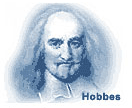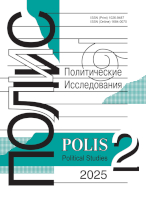The history of post-Soviet Armenia through its political myths and symbols
Zolyan S.T.,
Russian-Armenian University, Yerevan, Armenia, surenzolyan@gmail.com
elibrary_id: 733695 | ORCID: 0000-0002-4422-5792 | RESEARCHER_ID: E-1710-2018
Article received: 2024.03.05 12:19. Accepted: 2024.05.20 12:20

DOI: 10.17976/jpps/2024.05.06
EDN: PWHSDU
Zolyan S.T. The history of post-Soviet Armenia through its political myths and symbols. – Polis. Political Studies. 2024. No. 5. https://doi.org/10.17976/jpps/2024.05.06. EDN: PWHSDU (In Russ.)
The research was supported by the Science Committee ofRA, in the frames ofthe research project №21AG- 6C041 “Cognitive, communicative and semiotic mechanisms ofthe formation ofhistorical memory and national identity”.
We address the semiotics of conceptual shifts in the dominant discursive political and sociocultural practices of the Post-Soviet Armenia. The political history of independent Armenia is expressed through dominant political symbols and concepts, with a heterogeneous mixture of mythologized ancient history, Soviet and anti-Soviet ideologies. Attempts to create new symbols or re-interpret old ones led to significant transformations in the main discursive practices, which could form the foundation for the legitimization of the Armenian political identity. In general, if we depart from the substantive aspects, semiotic operations are governed by two main transformational principles: recursion and inversion, precisely those that Levi-Strauss described in relation to myth. At the same time, different cycles of this process can coexist in the same socio-cultural space. The political post-Soviet history of Armenia is divided into four periods, each of which is associated with a specific political regime (1990 - 1998; 1998 - 2018; 2018 - 2020; 2020 - up to present). Each of them gives rise to different political myths, both dominant (official) and oppositional, but in general, they are all based on the basic vocabulary that was formed in the late 1980s and early 1990s. Therefore, from the point of view of symbolic conceptual patterns, they are all based on the transformation (negation, inversion, and recursion) of the previous stages. Thus, the initial stage was characterized by a revaluation of values: everything Soviet was to be denied, and the Republic of Armenia of 1918-1920 was considered as a model. However, the new authorities intended to establish themselves through the myth of the creation of a fundamentally new - namely, a political nation, therefore, a tension has emerged between the concepts of reincarnation and creation. Soviet Armenia is contrasted with non-Soviet Armenia, which is then split into two opposed concepts: the First vs. the Third Republic. Then their “reconciliation” took place. It is reflected in the metanarrative of the Three Republics, and the Soviet Armenia occupies a worthy place as an intermediate link from incomplete to full-fledged independent statehood. In the 1900s, primordial narratives were revived, asserting the immutability of Armenia, starting with the legendary progenitor Hayk. At present, there is an obvious attempt to create the concept of the “Fourth Republic” based on the negation of the previous ones, up to the rejection of the Declaration of Independence as a Soviet legacy and the annulment of previous symbols (the coat of arms, the anthem, the Mount Ararat).
References
Abrahamyan, L. (2006). Armenian identity in a changing world. Costa Mesa: Mazda Publishers.
Armenia's Velvet Revolution: A Special Issue. (2018). Demokratizatsiya: The Journal of Post-Soviet Democratization, 26(4).
Broers, L., & Ohanyan, A. (eds.). (2021). Armenia's Velvet Revolution: authoritarian decline and civil resistance in a multipolar world. London; New York; Oxford: I.B. Tauris. http://dx.doi.org/10.5040/9781788317214
Cassirer, E. (1953). Language and myth. New York: Dover Publications.
Cassirer, E. (1961). The myth of the state. New Haven: Yale University Press.
Edelman, M. (1985). Political language and political reality. Political Science & Politics, 18(1), 10-19. https://doi.org/10.2307/418800
Edelman, M. (1998). Language, myths and rhetoric. Society, 35, 131-139. https://doi.org/10.1007/ BF02838136
Lanskoy, M., & Suthers, E. (2019). Armenia's Velvet Revolution. Journal of Democracy, 30(2), 85-99. https://doi.org/10.1353/jod.2019.0027
Lasswell, H.D. (1949). The language of power. In H.D. Lasswel, & N. Leites (Ed.), Language of Politics (pp. 3-19). Cambridge: M.I.T.
Lasswell, H.D, Kaplan, A., & Brunner, R.D. (2014). Power and society. A framework for political inquiry. New York: Routledge. https://doi.org/10.4324/9781315127156
Ldvi-Strauss, C. (1955). The structural study of myth. The Journal of American Folklore, LXVII, 428-444.
Libaridian, G. (1999). The challenge of statehood: Armenian political thinking since independence. Watertown: Blue Crane Books.
Luhmann, N. (1984). Social systems. Stanford: Stanford University Press.
Ohanyan, A., & Kopalyan, N. (2022). How to train your dragon: Armenia's Velvet Revolution in an authoritarian orbit. Communist and Post-Communist Studies, 55(1), 24-51. https://doi.org/10.1525/j.postcomstud.2022.55.1.24
Panossian, R. (2006). The Armenians: from kings and priests to merchants and commissars. London: Hurst & Co.
Suny, R.G. (1993). Looking toward Ararat: Armenia in modern history. Bloomington: Indiana University Press.
Suny, R.G. (2001). Constructing primordialism: old histories for new nations. The Journal of Modern History, 73(4), 862-896. https://doi.org/10.1086/340148
Rutland, P. (1994). Democracy and nationalism in Armenia. Europe-Asia Studies, 46(5), 839-861. https://doi.org/10.1080/09668139408412202
Zakaryan, L. (2023). The activities and the transformation process of the Parliament of Armenia in the first years of Independence. History and Culture, 20(2), 159-174. https://doi.org/10.46991/hc.2023.20.2.159
Zolyan, M. (2023). Three republics of Armenia: the Soviet past and the politics of memory in postSoviet Armenia (1991-2018). Caucasus Survey, 12(2), 205-228. https://doi.org/10.30965/23761202-bja10018
Zolyan, S. (2005). Western democratic institutions and the Armenian reality. In Armenia on the Way to Europe (pp. 157-172). Yerevan: Antares.
Zolyan, S. (2011). Feudal democracy or democratic feudalism: Armenia in 2008. In Identities, Ideologies and Institutions. A Decade of Insight into the Caucasus 2001-2011 (pp. 32-47). Yerevan: Caucasus Institute.
Zolyan, S. (2020). The descriptive models of post-Soviet societies and Armenia’s possible development trajectory. Armenia 2018. Realities and Perspectives. Identity, 3(1), 261-270.
Welt, C., & Bremmer, I. (1997). Armenia’s new autocrats. Journal of Democracy, 8(3), 77-91. https://doi.org/10.1353/jod.1997.0036
Atanesyan, A.V. (2018). “Velvet Revolution” in Armenia: potential, gains and risks of political protest activity. Polis. Political Studies, 6, 80-98. (In Russ.) https://doi.org/10.17976/jpps/2018.06.06
Fomin, I.V., & Silaev, V.Yu. (2018). Armenian nationalism vs. Armenian state: cleavages and coalitions in the discourses on Sasna Tsrer. Polis. Political Studies, 3, 78-92. (In Russ.) https://doi.org/10.17976/jpps/2018.03.06
Pogosyan, G., & Poghosyan, R.M. (2023). Socio-cultural identification of modern Armenians. Sociological Studies, 11, 121-126. (In Russ.)
Pogosyan, G.A. (2023). Historic memory and national identity. Yerevan: RAU Publishing House. (In Russ.)
Sarkisyan H.L., & Dunamalyan N.A. (2020). The dynamics of civil identity transformation in modern Armenia: factors and subjects. Polis. Political Studies, 2, 53-72. (In Russ.) https://doi.org/10.17976/jpps/2020.02.05
Zolyan, S. (2007). Institutions of Western democracy and Armenian reality. Comparative Constitutional Review, 2, 129-135. (In Russ.)
Vaan Teryan. (1973). Spiritual Armenia. In Collection of works in 4 volumes. Vol. 3 (pp. **-**). Yerevan. (In Arm.)
Zakaryan, L. (2023). The activities and the transformation process of the Parliament of Armenia in the first years of Independence. History and Culture, 20(2), 159-174. (In Arm.)
See also:
Smorgunov L.V.,
Political identity and the concept of the political. – Polis. Political Studies. 2012. No6
Misurov D.A.,
Political Symbolics: between Ideology and Political Publicity. – Polis. Political Studies. 1999. No1
Potseluyev S.P.,
Symbolical Politics: A Constellation of Concepts for an Approach to the Problem. – Polis. Political Studies. 1999. No5
Tkhagapsoyev Kh.G.,
In search of a new methodological paradigm in political science: the identity approach. – Polis. Political Studies. 2013. No4
Fadeyeva L.A.,
The problem of identity in modern comparative political science. – Polis. Political Studies. 2011. No1





.jpg)






 print
print
.jpg)
.jpg)